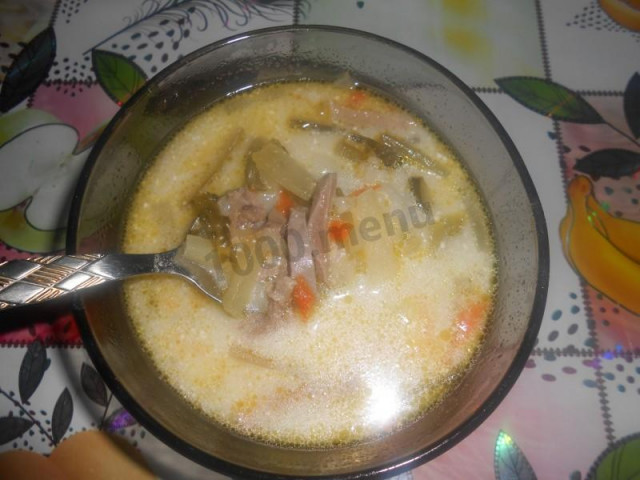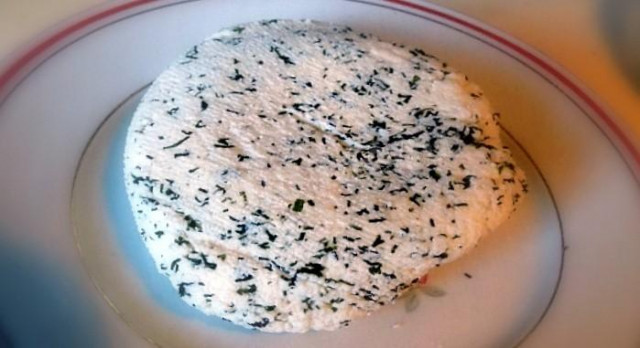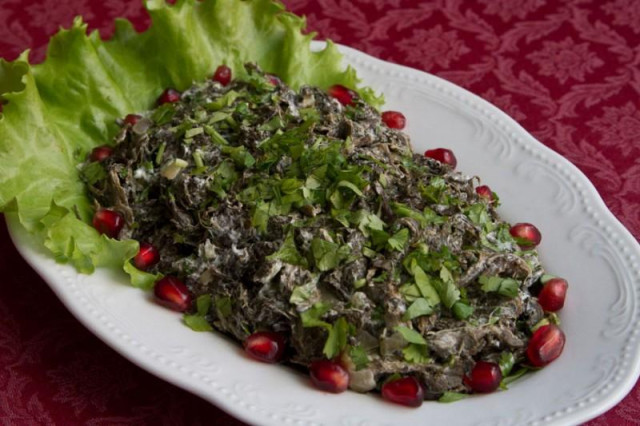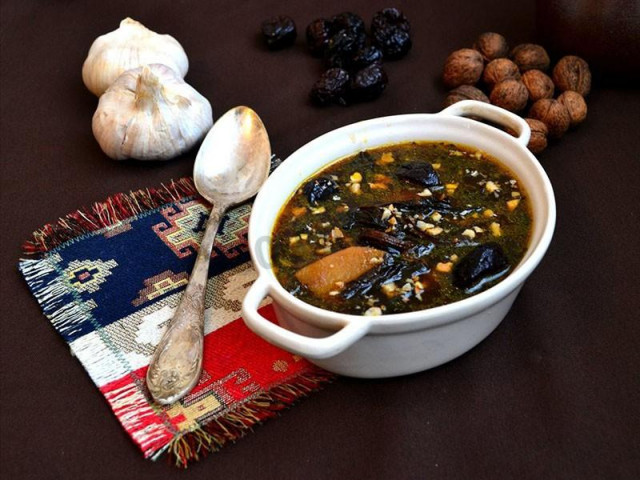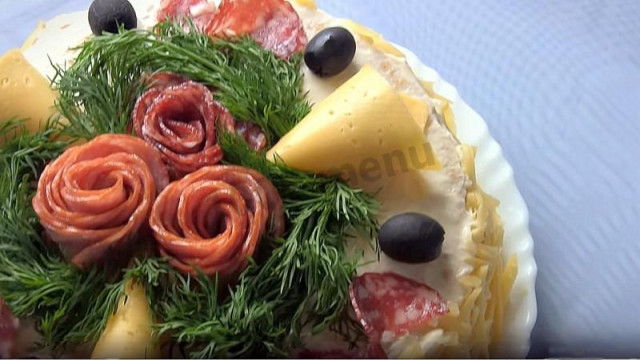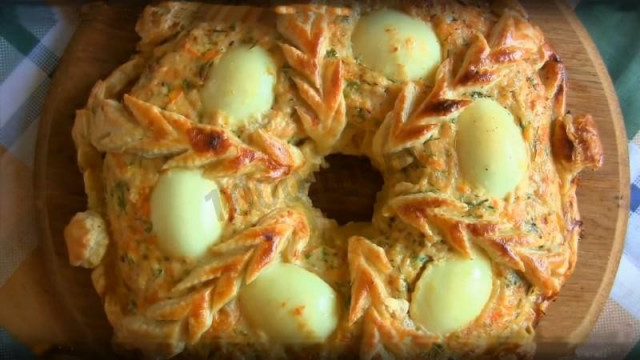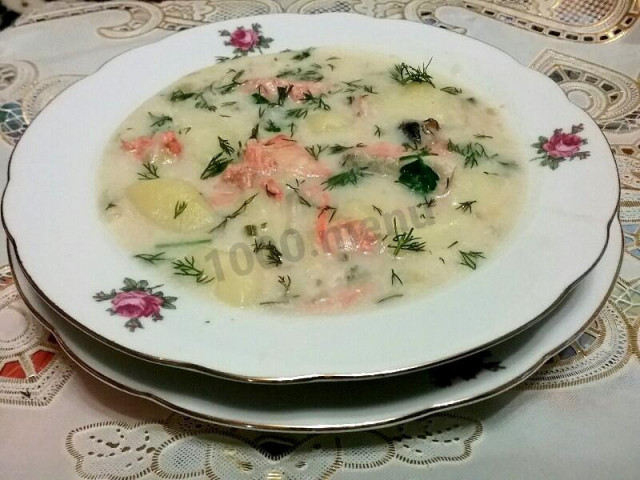Composition / ingredients
Step-by-step cooking
Step 1:

Prepare the ingredients. Rinse the rice until the water is transparent, boil the tongue until ready. Prepare a saucepan with 3 liters of water or meat broth. note: The soup will be much more satisfying and richer if it is cooked not on water, but on meat broth. If there is no natural meat broth (left over after cooking meat), then you can make broth on a broth cube (1 piece per pan) or cook it on pork or beef bones (then get them from the soup
Step 2:

Cooking the tongue: Rinse the tongue thoroughly, cut off the remnants of dried blood. Pour hot water into a saucepan, lower the tongue there, bring to a boil, turn down the heat and cook for 15 minutes. Then drain the water, pour a new one and continue to cook until ready. This is done so that all unpleasant odors leave the meat. The cooking time depends on the size and age of the tongue - the calf will have time to cook in 1-1.5 hours, and the tongue of an adult animal can cook up to 4 hours.
Step 3:

30 minutes before the end of cooking, you can add carrots and onions to the broth, as well as bay leaves and peppers. It is necessary to salt the tongue shortly before the end of cooking. The readiness of the tongue is checked with a fork - pierce the tip of the tongue, if the juice is cloudy, then you need to cook for some time, if the juice is transparent, then the tongue is ready. Remove the tongue from the broth and lower it for a few minutes . in cold water to make it easier to peel it.
Step 4:

While the tongue is cooking, you can prepare vegetables - onions, carrots, potatoes, peel and rinse. Finely chop the onion, grate the carrots on a coarse grater, cut the potatoes into cubes. Cucumbers are also cut into cubes.
Step 5:
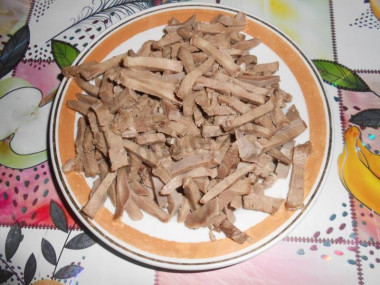
After the tongue is cooked, put a pot of water or meat broth on the fire. Peel the tongue from the skin, also cut into cubes.
Step 6:

Put out cucumbers with a little broth. Carrots with onions (separately from the gourds) pass until golden.
Step 7:
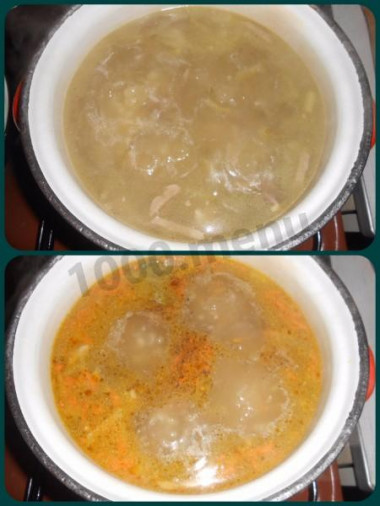
When the water / broth boils, add potatoes, as it boils, add rice. Simmer for 10-15 minutes. Then add cucumbers, followed by fried onions and carrots, cook for another 10 minutes. Then add cucumber pickle, bay leaf, pepper. If necessary, top up with water. Cook for 10 minutes. Then turn off the heat and let the soup brew under the lid for another 10 minutes.
Step 8:
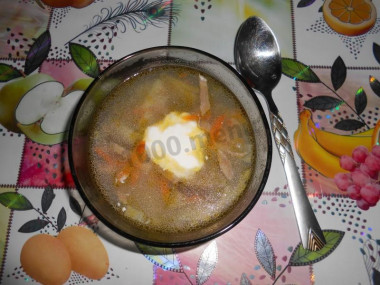
Bon appetit!
ADVICE: When buying a language, do not try to buy a very large language, because it may be from an old animal. It will have to be cooked for a very long time, and by the end of cooking there will be practically no useful substances left in it. And besides, it is known that in a young veal tongue, as in any young meat, there are much more nutrients and vitamins.
Caloric content of the products possible in the composition of the dish
- Onion - 41 kcal/100g
- Ripe potatoes - 80 kcal/100g
- Baked potatoes - 70 kcal/100g
- Mashed potatoes - 380 kcal/100g
- Boiled potatoes - 82 kcal/100g
- Potatoes in uniform - 74 kcal/100g
- Fried potatoes - 192 kcal/100g
- Raw wild rice - 353 kcal/100g
- Brown raw rice - 360 kcal/100g
- Boiled brown rice - 119 kcal/100g
- White fortified raw rice - 363 kcal/100g
- Fortified boiled white rice - 109 kcal/100g
- White rice, steamed, with long grains raw - 369 kcal/100g
- Steamed white rice, boiled with long grains - 106 kcal/100g
- Instant dry rice - 374 kcal/100g
- Instant rice, ready to eat - 109 kcal/100g
- Fig - 344 kcal/100g
- Carrots - 33 kcal/100g
- Dried carrots - 275 kcal/100g
- Boiled carrots - 25 kcal/100g
- Bay leaf - 313 kcal/100g
- Salt - 0 kcal/100g
- Pickles - 11 kcal/100g
- Pepper - 26 kcal/100g
- Brine - 1 kcal/100g
- Pig tongue - 165 kcal/100g

